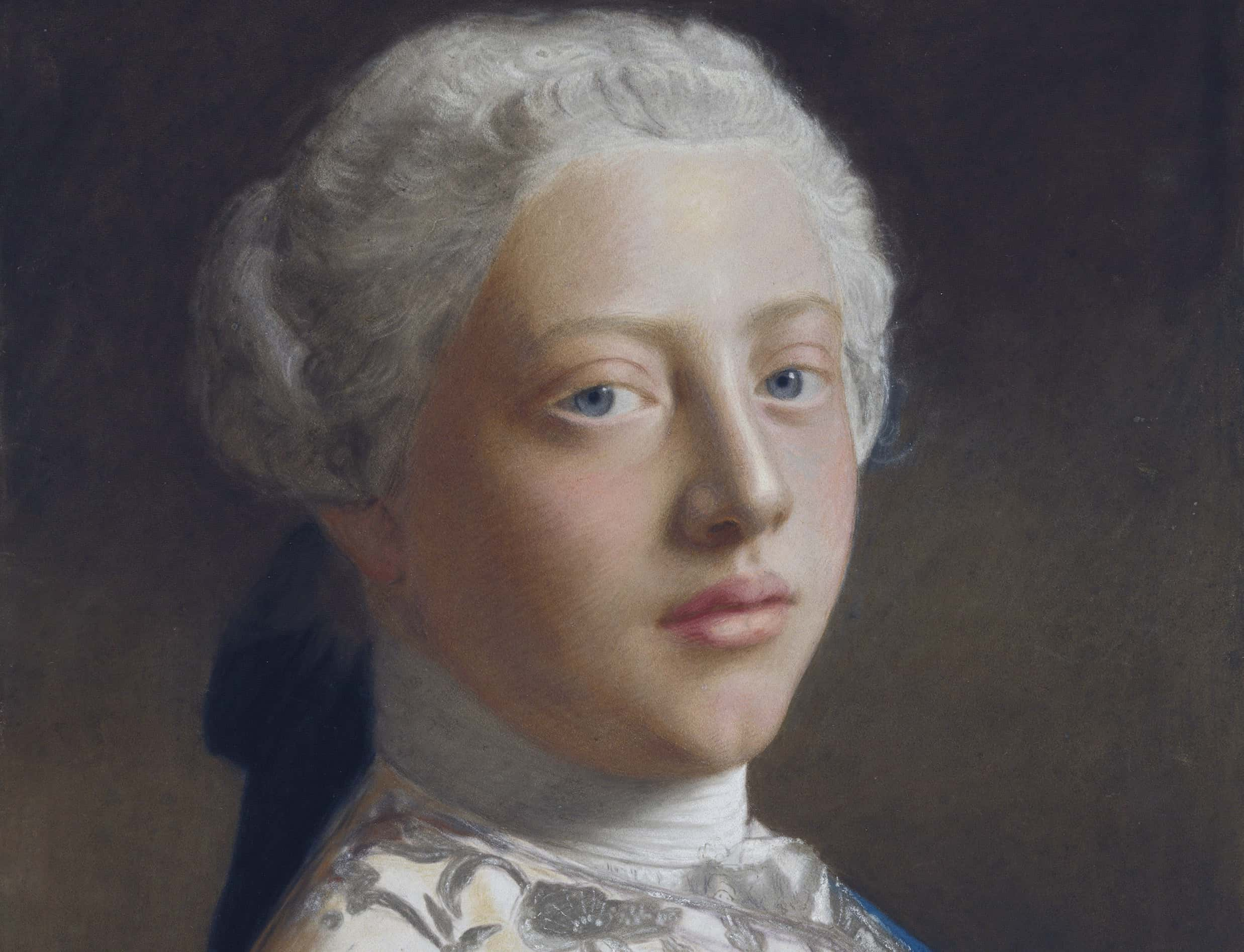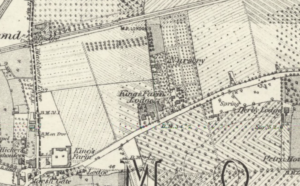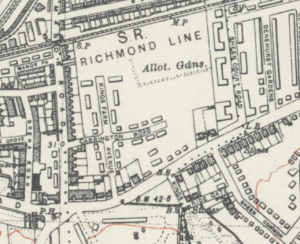The King’s Farm

Habitats & Heritage are working towards a new green hub site in Sheen that sits on land belonging to the Crown Estate. This small patch of land which comprises a gravel thoroughfare seems completely isolated from any royal connections. So why does the Crown own it? H&H volunteer Esmé Thorne investigates the now-lost King’s Farm.
The King’s Farm was situated in Sheen and encompassed a large amount of the surrounding area and was one of the many farms owned by the monarch, namely King George III. All that now remains is a thin gravelled stretch that was once the entrance drive, the only portion of once thriving farmland still attributed to the Crown.
Though it looks unremarkable now, this piece of land as well as the surrounding area was bought by Queen Caroline in 1749 and eventually passed onto King George III who was an avid farmer. The King was satirised as ‘Farmer George’ by the media of the day with the image portrayed of him as a homely, country gentleman with more interest in older farming methods than new experimental techniques. He was further mocked for his interest in the sciences and industry rather than art. This interest came at a time when industrialisation was in its infancy when the focus on larger-scale industry was slowly replacing the former agricultural movement. These seemingly mundane interests at the time cemented his image as a moral and respectable king.
George III throughout his reign suffered with mental illness, leading to him receiving various new treatments and him earning the nickname ‘mad King George’. To help with his condition, his farms, such as King’s Farm, gave him somewhere to retreat to where he could escape court life and pursue his interests quietly, away from prying eyes.

After the death of George III in 1820 part of the farmland was used as a market garden and sold to the Commissioners of Woods and Forests. A contemporary account from The London Encyclopaedia of Gardening in this period commended how on that land ‘Bigg’s of Mortlake was said to produce 40 acres of crops at any one time’ outlining their speciality asparagus. This use was carried on from the nineteenth to the twentieth century, with various tenants passing through, including Robert Yates in 1838 and others such as George and John Stern in 1883. Throughout this time the King’s Farm Lodge was also rented out to tenants, including families such as the Cockburns and their servants in 1881.
In 1928 the Manor Road Allotments were established for £8431 of which £8100 was borrowed with permission from the Minister of Health. The year previously, the land spanning 12.5 acres was purchased from The Crown Estate Agents, Cluttons and so The King’s Farm estate was divided, becoming the collection of houses and allotments we see today.
In January 1940, a proposal to build an air raid shelter on the Manor Road site was deferred because there were already two, one on Grove Road and another proposal for one in Mickey’s Grove. This request for new shelters was following the bombings in the area in 1940, such as on Richmond Town Hall, where the entire contents of the council chamber were destroyed, and on the allotments, where the plot 162 shed was destroyed as well as numerous other plots were cratered. In November of the same year, The Manor Road Allotment Association campaigned successfully for a shelter from the council for the allotment holders as well as residents on surrounding streets. This shelter was built to house 48 people but ‘no bunk beds were to be provided’. In the campaign for its development, it was also argued that it could be used to ‘provide much-needed accommodation at the end of the war for allotment storage purposes’.

The Manor Road allotments were seen as at threat for being hit because of their size, (187 plots during the war rented at 25 shillings annually), as well as their location, right beside the railway line. This threat meant that in 1946 plot 56 was successful in applying for an Anderson shelter, though the committee originally delegated supervisory responsibilities to the allotment superintendent who insisted on the difficulty of obtaining shed timber as well as that the sheds must be painted green. After this permission was granted, many other plots also got their own Anderson shelters from 1947 to 1948. Requests for sheds from tenants were also approved until January 1954, when the rents for the older official sheds ceased, nevertheless permission was then granted later in 1954 for the re-erection of the Anderson shelters and other sheds.
To this day, many of the Anderson shelters stand as storage sheds, even the air raid shelter from 1940 has been converted into toilets and a store with holes knocked through the thick walls. In the end this shelter came too late, it was built after The Blitz, when the Luftwaffe rarely raided Britain. From this time, the number of people using the shelters per day significantly dropped, leaving this shelter, as well as most others around Richmond practically derelict. This led to most of the shelters being demolished, leaving just two, one in East Sheen at St. Leonards Court, and one on the former site of one of the farms of George III, The King’s Farm.